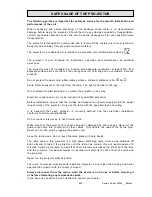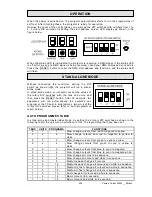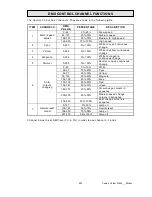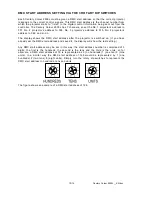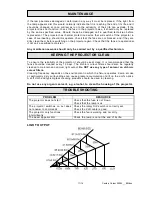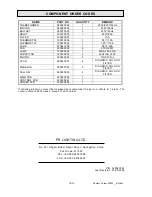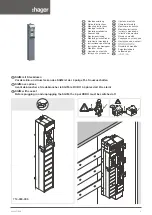
MASTER/SLAVE MODE
Many luminaires can run synchronously by linking them with each other in the master/slave
mode.
Select one luminaire as the master, and set the DIP switches as shown in the figure below.
Regard the other luminaires as the slaves, and set their DIP switches as shown in the figure
below.
Connect the master’s output to the first slave’s input with an XLR-XLR control cable, and
connect the first slave’s output to the second slave’s input with an XLR-XLR control cable.
The rest may be deduced by analogy. Eventually connect the last slave’s output to a DMX
terminator as shown below.
In master/slave mode, you should only set the value of the tens and units of the rotary DIP
switches of the master, and then press the RESET button. After 30 seconds, all the
luminaires will run automatically and follow whichever one of the 15 automatic programs
selected. (How to set the rotary DIP switches, please refer to “auto programmes table”
above.)
You can easily differentiate the master from the slaves. The master’s status LED is off and
the slaves’ status LEDs are constantly on.
CONTROLLER MODE – DMX 512 OPERATION
Century Colour uses international standard DMX 512 protocol.
You may use a controller to control many luminaires by setting
the rotary DIP switches. (For details please refer to “DMX start
address setting via the 3 rotary DIP switches”.)
Set the DIP switches as shown in the figure on the right. Now, all
the luminaires will work under the controller.
Connect the controller’s output to the first luminaire’s input, and
connect the first luminaire’s output to the second luminaire’s
input. The rest may be deduced by analogy. Eventually connect the last luminaire’s output to
a DMX terminator as shown below.
7/14
Century Colour 2500L EN.doc



